13 Stocks With Big Future Potential
It takes guts to invest in the future.


It takes guts to invest in the future. Thirty years ago, an investment in Amazon.com might have been met with derision. That it was not yet profitable was just one knock against it. Would people really prefer to buy a book online and wait for it to be delivered to their door, rather than visit the neighborhood bookstore to buy it? We all know the answer to that now.
Indeed, investing in innovation takes not only courage, but also foresight and even a little faith. But it can pay off big time. The not-so-simple trick, says David Eiswert, who manages the T. Rowe Price Global Stock fund, “is to invest on the right side of change.”
The 13 stocks highlighted here stand to benefit from one of five sweeping trends that will be catalysts for long-term growth: climate change, human longevity, cloud computing, artificial intelligence and 5G technology. Despite their promise, however, most of these stocks aren’t for the faint of heart. Most aren���t bargains, either. Consider them long-term holdings that you might have to turn a blind eye to once in a while before you eventually reap the rewards. Change, after all, takes time. “The world moves in little, incremental steps that lead to giant changes,” says Shelly Palmer, chief executive of the Palmer Group, a tech-focused consulting firm.
Unless otherwise noted, prices and other data are as of February 15. Earnings growth rate is estimated for the next three-to-five years. P/E ratio is bas earnings for the next four quarters. Sources: Yahoo Finance, Zacks Investment Research.

Climate Change
In its fourth national climate assessment, a coalition of 13 U.S. government agencies, drawing on the research of more than 300 scientists and policy experts, concluded that climate change will cause extreme weather, such as droughts, floods and heat waves; increase the spread of infectious diseases; and negatively impact the quality and safety of air, food and water. Signs of environmental distress are everywhere. Over the past year, the country has suffered intense hurricanes and devastating wildfires.
Many cities and states have responded, believing that the storms are the result of excess carbon dioxide emissions and global warming. Nearly 100 U.S. cities have committed to switching from coal, oil and gas to the use of only renewable energy sources, such as solar and wind, to power their electricity. California, Hawaii and New York have said they’ll ditch fossil fuels for renewable energy and have committed to doing so over the coming 20 to 25 years.
Companies have decided that being ecologically proactive is good for business. Starbucks is switching to paper from plastic straws, Nike incorporates recycled material in 75% of its shoes, and a legion of firms, including Adobe Systems and PNC Bank, are following green construction guidelines for some offices. “If a company doesn’t have a good environmental track record, a number of reports show that consumers will stop buying its products,” says Lori Keith, comanager at Parnassus Mid Cap, a Kiplinger 25 fund.

Xylem
- Market value (in billions): $13.3
- Earnings growth rate:17.5
- Price-earnings ratio: 22
Concern about climate change has heightened awareness of how we use our natural resources, with the supply and quality of water near the top of the list. Xylem (XYL, $74), which takes its name from a Greek term for the tissue that transports water in plants, is a water equipment and technology company that enables public utilities and commercial and industrial customers to transport, treat, test and efficiently use water. Xylem’s know-how makes water safer and more accessible.
It is a steady business that’s growing. Xylem customers tend to stick with the company because costs to switch to another water services provider can be high, and that creates an “annuity-like” stream of revenue, says Keith. Revenues over the past three years have increased by 13% annualized. A string of recent acquisitions has added a number of smart meters, pressure sensors, and diagnostic and analytics tools to the company’s lineup. One such tool is a sensor that can identify leaks in water pipes—a necessity these days, given the many municipalities with aging infrastructure.
Analysts expect earnings at Xylem to increase by 18% a year, on average, over the next three years. Parnassus Mid Cap added more shares in Xylem when prices dropped in late 2018. At $74 a share recently, the stock trades at 22 times estimated earnings for 2019, just a tad higher than its 10-year median price-earnings ratio of 20.

NextEra
- Market value (in billions): $88.0
- Earnings growth rate: 7.7
- Price-earnings ratio: 22
Electric utilities aren’t your typical climate-change bet. In fact, they’re often cast as part of the problem. But some utilities, such as NextEra Energy (NEE, $184), are also big players in renewable energy production and storage. NextEra, which owns the largest Florida electric utility, is one of the world’s leading producers of clean energy, mostly through wind, solar and nuclear power, which it sells to other power companies for distribution.
NextEra’s renewable energy division isn’t a side hustle. In 2018, the unit accounted for 40% of the firm’s net income, and the division is growing faster than the firm’s electric utility business. The company has solar energy centers in states across the country, including Alabama, California, Florida and New Mexico. NextEra also has more than 100 wind farms scattered across the western U.S., in California, Iowa, North Dakota and Texas, among other states. Demand for renewable energy is expected to increase as costs fall for renewable energy and energy storage. Credit Suisse analyst Michael Weinstein expects an “explosion” in wind and solar power usage over the next decade.
NextEra’s earnings should increase between 7% and 9% annually over the next three years, according to analysts’ estimates, driven mostly by the company’s renewable energy business. That’s better than the 6% annualized earnings growth expected for the electric utility sector overall.

Waste Management
- Market value (in billions): $42.0
- Earnings growth rate:12.3
- Price-earnings ratio: 23
Waste management may not relate directly to climate change, but it’s a pressing world problem that affects the health of the planet. According to the World Bank, the world’s cities generated 2.2 billion tons of solid waste in 2016. By 2050, that figure is expected to increase 70%, to 3.7 billion tons. Americans are among the biggest generators of trash. We create 4.5 pounds of trash per person a day, and the amount creeps up every year. The rest of the world clocks in closer to 3.1 pounds per person—or less.
That makes managing waste a high-growth business. How our trash is picked up, sorted and recycled, and where it ends up, is what Waste Management (WM, $99) is all about. It is the country’s biggest provider of waste-management services, a recession-proof, necessary job that throws off “compelling” amounts of free cash flow (cash left over after necessary expenses to run the business), says Stifel analyst Michael Hoffman. Analysts expect annualized earnings growth of 12% over the next three years.
The company has also invested in projects with an eye to the future. Many of Waste Management’s landfills, for instance, capture methane gas, which is produced naturally as waste decomposes, for use as a clean, renewable energy alternative to fossil fuels. In some cases, the gas is used to fuel the company’s fleet of trucks. It also fuels electricity generators, which produce energy that is then sold to public and municipal utilities and power cooperatives. “It’s a closed-loop waste management strategy,” says Keith, a win-win for the environment.

Longevity
People everywhere are living longer. A baby born in the U.S. today has a life expectancy of 78 years. In 1900, it was just 50 years. Meanwhile, the number of people worldwide age 60 and older is expected to double, to 2.1 billion, by the middle of this century.
But even though we are living longer, we’re not living healthier, more active lives, according to the World Health Organization, a United Nations agency concerned with public health. To better manage health problems in old age, says WHO, early detection is key. That’s where genomic science comes in.

Illumina
- Market value (in billions): $44.1
- Earnings growth rate: 21.5
- Price-earnings ratio: 46
- Illumina (ILMN, $300), the leading maker of DNA sequencing tools and instruments, is at the center of the genomics revolution. So far, 2.4 million human genomes have been sequenced, says Cathie Wood, CEO of ARK Invest, a money management firm that focuses on innovative companies. By the end of 2023, the number of sequenced genomes will hit 70 million. Last year, Illumina reported that more than 90% of all gene sequencing performed so far has used the company’s technology.
DNA sequencing may become more routine as the cost to sequence falls further—from $1,000 today to as little as $100 in two to three years. Someday, says Wood, doctors may have patients get their DNA sequenced every three years to identify which genes, if any, have mutated in that time. Gene mutations are precursors of diseases, not a sign that a person has the actual disease itself. But sequencing may be a way to catch cancer in an early or even precancerous stage.
Illumina booked a record $3 billion in revenues in 2018. Over the next three years, analysts expect annual revenue growth in the double-digit percentages and earnings growth of 22% or better. That’s close to 1.5 times better than analysts’ earnings growth expectations for the biomedical-genetics subindustry as a whole, which includes 105 companies.
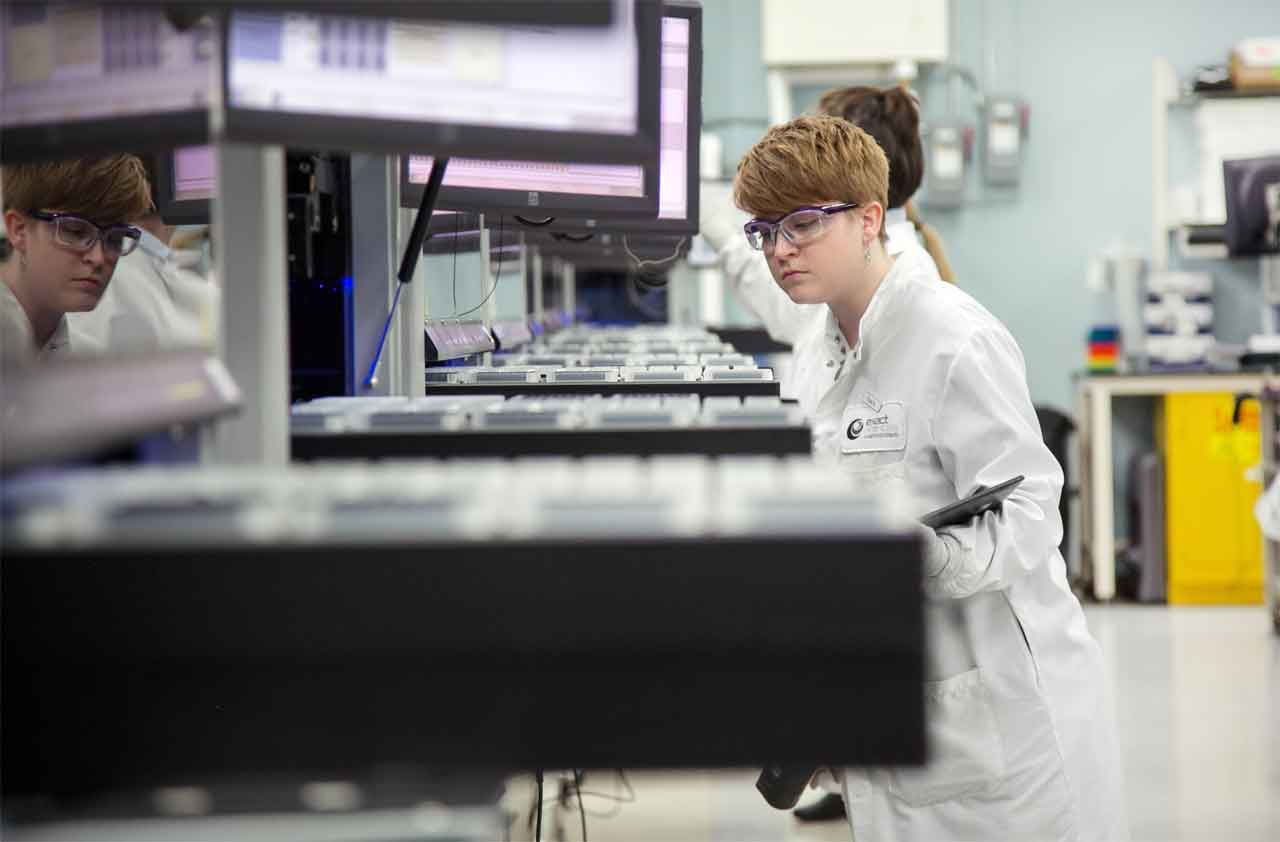
Exact Sciences
- Market value (in billions): $10.9
- Earnings growth rate: NA
- Price-earnings ratio: NA
The more genes and gene mutations we identify, the more companies spring up to address specific maladies.
- Exact Sciences (EXAS, $89), a company with $266 million in annual revenues, is known for Cologuard, its at-home, noninvasive colon-cancer screening test. Cologuard identifies DNA mutations in your stool sample (sorry, there’s no delicate way to say it) that can be associated with the presence of colon cancer or precancerous lesions. “Exact Sciences is a stellar example of how unlocking genetic markers can be life-changing,” says Eiswert, of T. Rowe Price Global Stock. More advertising, a beefier in-house sales staff and a new deal with Pfizer to promote the prescription-ordered, mail-delivered Cologuard kit could boost sales by 58% in 2019 and 48% in 2020.
Exact Sciences isn’t profitable yet, but losses are shrinking. Analysts expect a loss of $1.18 per share in 2019 and a loss of $0.25 per share in 2020. UBS analyst Dan Brennan rates the stock a “buy” and recently raised his 12-month target price from $100 to $109.

CRISPR Therapeutics
- Market value (in billions): $1.6
- Earnings growth rate: NA
- Price-earnings ratio: NA
Even more cutting edge—and thus riskier for investors—is the field of gene-editing therapy. In this experimental technique, mutated genes are tackled in one of three ways: They are knocked out entirely; they’re replaced with a copy of a healthy gene; or a new gene is introduced into the body to help fight a disease.
Three companies have patents on the knock-out type of gene therapy, using a technique known by the acronym CRISPR, which is arguably the most revolutionary technology of the three gene therapies. The companies tackle monogenic diseases, or illnesses caused by one mutated gene, says Wood. Monogenic disease therapies, she adds, are a $75 billion market for drug firms, and the three patent-holding companies stand to capture roughly 10% of that.
But only one company, CRISPR Therapeutics (CRSP, $32), has a therapy in clinical trials—for blood disorders. CRISPR, founded in 2013, has little in revenue and no profits. That makes it a risky bet—good for your mad money, not your college or retirement fund.

Cloud Computing
The cloud has been forming for years, but there’s a lot of growth left. Companies that migrate to the cloud use a network of remote services hosted on the internet to store, manage and process data, instead of doing so on their own servers located on site. It turns out that many enterprises haven’t yet fully shifted to the cloud. The consulting firm McKinsey estimates that only 20% of companies have done so.

Amazon.com
- Market value (in billions): $789.8
- Earnings growth rate: 26.9%
- Price-earnings ratio: 61
And yet, firms that do make a complete transition can offer better services and save money. After a major database breakdown in 2008, for instance, Netflix shifted its databases to Amazon Web Services, a division of Amazon.com (AMZN, $1,608). Over the next seven years, Netflix migrated all of its business to the cloud, from billing to customer and employee data management. The timing was good: Netflix started to grow exponentially and now streams video content in 190 countries to 139 million subscribers.
Considering Amazon.com a play on cloud computing has heretofore been a tricky call, because the firm’s e-commerce business dwarfed everything else. But AWS is finally moving the needle at Amazon. Though AWS accounted for just 11% of overall sales in 2018 at Amazon, it represented 59% of operating profits. And AWS dominates cloud computing with a 34% market share—more than double the share of its closest competitor (more on that company below). Analysts expect AWS to maintain its top spot for years to come.
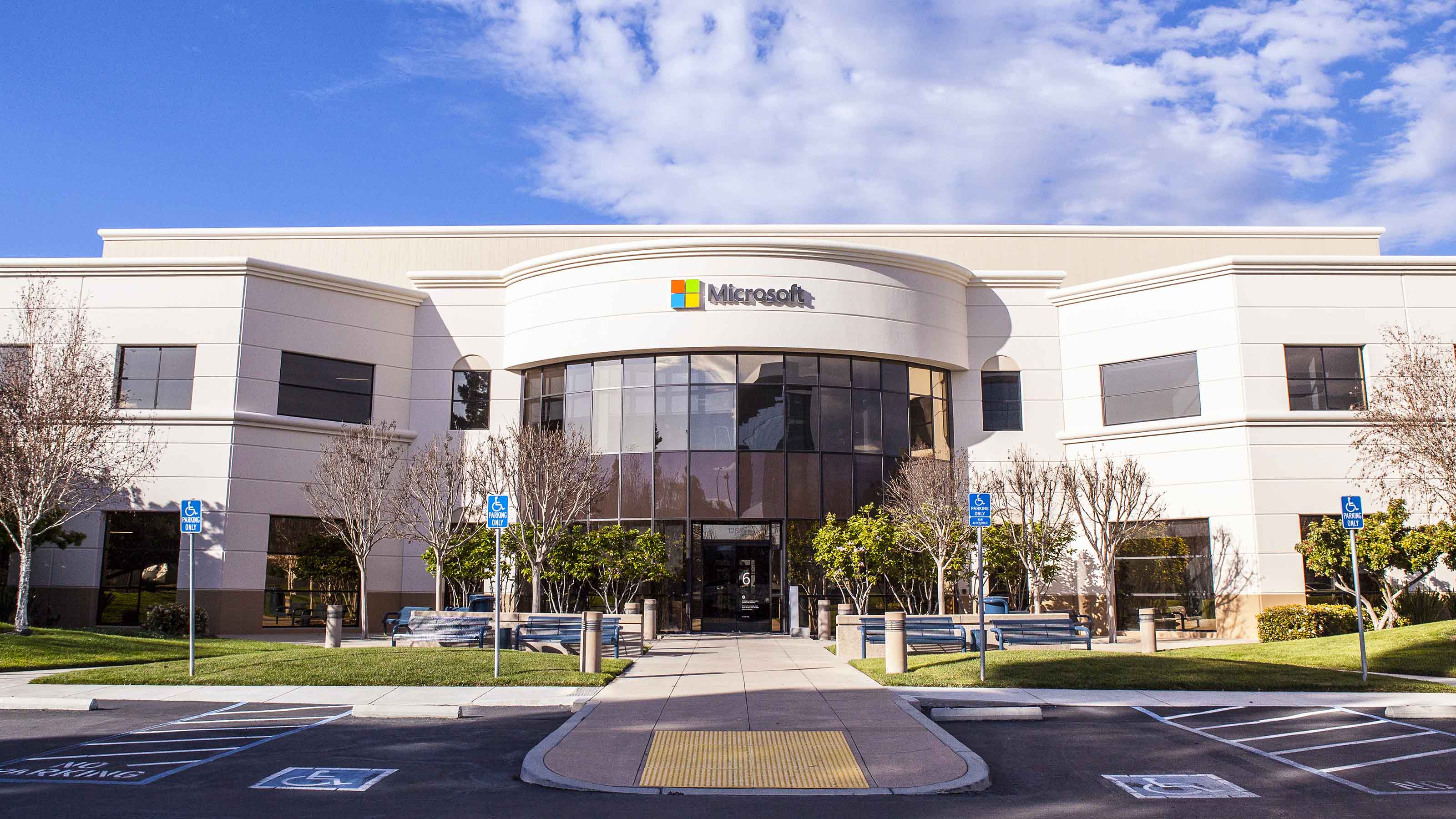
Microsoft
- Market value (in billions): $830.3
- Earnings growth rate: 12.4
- Price-earnings ratio: 24
Still, there’s room for more than one winner in the cloud. With a 15% share of the market, Microsoft’s (MSFT, $108) Azure service is growing faster than AWS. Sales rose 76% in the second quarter of Microsoft’s 2019 fiscal year, compared with the same quarter a year earlier, making Azure Microsoft’s fastest-growing business. By contrast, AWS grew 45% year-over-year in the most recent quarter.
Someday, Microsoft may be better known for Azure than for its Windows operating system. Analysts at KeyBanc Capital Markets predict that Azure will generate more sales than Windows by 2021.

Salesforce.com
- Market value (in billions): $121.7
- Earnings growth rate: 24.2
- Price-earnings ratio: 62
As firms such as Amazon and Microsoft provide the hosting, other companies are prospering by producing cloud-based software applications. Salesforce.com (CRM, $159) sells customer relationship management applications. Its software helps 150,000 large and small companies keep track of sales, services and marketing, among other tasks. Customers include sportswear apparel firm Adidas as well as Yeti, the maker of coolers and drinkware.
Salesforce.com has had a cult-like following since it began trading publicly in 2004. It is still outpacing its peers, though. Revenues are expected to increase by 26% in 2019 and 21% in 2020—a slowdown from an annualized growth rate over the past 10 years of 28%, but double the expected growth rate of companies in the computer software services industry overall. Profits are expected to increase 24% annualized over the next three years, better than the 15% pace expected for similar firms.
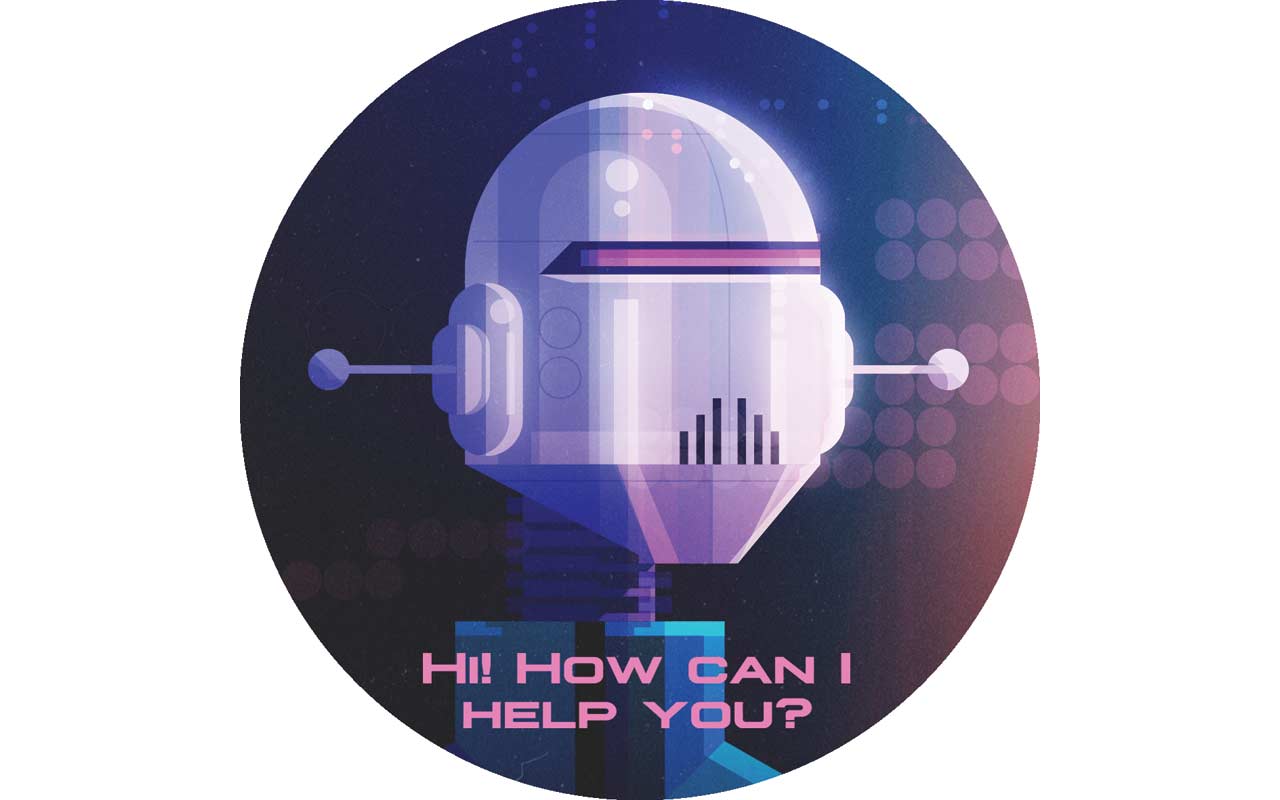
Artificial Intelligence
You can see every day how artificial intelligence shapes our lives. Milliseconds after you click your Netflix user profile, for example, an algorithm has picked TV shows and movies especially for you, based on what you’ve watched as well as on the viewing histories of 100 million subscribers. Now, a higher tier of artificial intelligence—machine learning and a subset of that called deep learning—is emerging that will enable machines to do things that humans do, only better.
For instance, an international study found that an AI machine—essentially a specialized computer network—could more accurately diagnose skin cancer than a group of human dermatologists. Scientists taught the network how to identify skin lesions by introducing more than 100,000 images marked with a diagnosis. The AI network correctly diagnosed malignant cases 95% of the time; a team of 58 dermatologists were only 87% accurate. That’s deep learning.
An abundance of data is required for deep learning, which makes the big tech companies, including Google parent Alphabet, Amazon.com and Facebook, fearsome competitors in artificial intelligence. But AI represents a fraction of overall revenue at those firms, so investing in them is not a focused bet on AI. “It’s difficult to find a pure-play AI company,” says Chris Lin, manager of Fidelity OTC Portfolio. Many are still privately held.

Nvidia
- Market value (in billions): $96.0
- Earnings growth rate: 10.7
- Price-earnings ratio: 30
Semiconductor firm Nvidia (NVDA, $157) might be an exception. It is the biggest player in the “brains” that enable deep learning. Its graphics processing units, or GPUs, can process images at lightning speed, finding patterns and producing insights. The more data there are, the more accurate the insights. When it comes to training devices to recognize patterns from mountains of data and predict things accurately, it’s essential to use GPUs, says ARK Invest’s Wood.
AI chips fueled 133% growth in sales at Nvidia’s data-center business in the company’s 2018 fiscal year, which ended in January. CFRA analyst Angelo Zino expects continued significant growth in this business. An oversupply in the market for another Nvidia product—cryptocurrency mining chips—is weighing on the firm’s results. But at $157 a share, the stock trades at just over half its 52-week high. Take advantage of any further price dips to build a stake in the company over time.

LivePerson
- Market value (in billions): $1.7
- Earnings growth rate: 35.0
- Price-earnings ratio: Not meaningful
These days, many people of all ages—not just millennials—prefer to communicate through text or e-mail rather than converse live. That’s what the ironically named LivePerson (LPSN, $26) is hoping to cash in on, along with better customer service. LivePerson combines AI with a customer-service software platform that allows consumers to connect with their favorite brands in a high-tech way.
Adobe, Citibank and Home Depot, among others, use the AI-backed messaging and chatbot solutions from LivePerson to interact with their customers. Instead of calling a toll-free number, consumers can communicate when they want through text, by chat or even with a smart-home device such as Google Home. Such communication often (but not always) lacks the human touch, but it’s real-time and personalized. LivePerson’s sales have grown 13% over the past 10 years, annualized, and analysts expect an average 14% increase over each of the next three years.
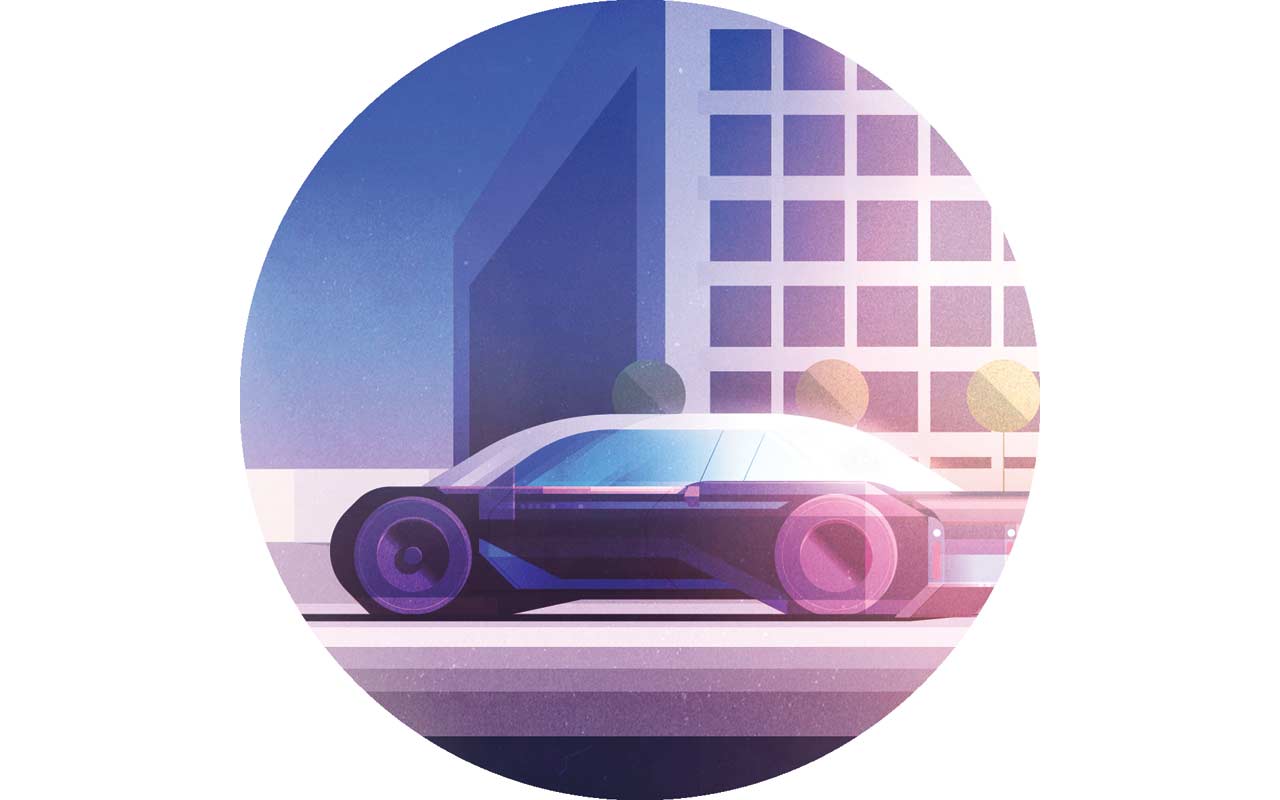
5G Wireless
Artificial intelligence may be powering innovation, but 5G wireless technology provides the connections for us to take advantage of it. For autonomous vehicles to take over the streets, for instance, thousands of bits of data have to move across the web instantaneously. That’s a load the current 4G mobile communications system just can’t handle.
Therein lies the promise of 5G, the next-generation mobile communication system that will be as much as 10 times faster than current connections. With 5G technology, self-driving vehicles will be able to communicate with each other in real time as they move together in traffic, as well as pick up signals from sensors as they approach traffic lights or a pedestrian. Sensors on grocery store shelves will signal to robots that the paper goods aisle needs restocking. Movies will download in seconds, not minutes. The technology will revolutionize industries ranging from transportation to health care, retail and manufacturing.
5G isn’t here in a big way yet, no matter how much the mobile carriers tout it. AT&T, T-Mobile and Verizon launched the technology in only a handful of cities last year. But most carriers promise nationwide service by 2020, and 5G-enabled laptops and mobile phones are coming.

Ericsson
- Market value (in billions): $30.7
- Earnings growth rate: 41.7
- Price-earnings ratio: 23
When we’re living in a 5G world, we’ll want seamless connections as we walk around town, enter buildings or ride in elevators. Ericsson (ERIC, $9) makes devices that are crucial to making that possible. The devices, called small cells, act like hotspots to connect pockets of the 5G world.
Ericsson’s 4G small cells, which are upgradable to 5G, line some Los Angeles streets. In 2015, the city installed dozens of so-called SmartPoles in the Hollywood area, which combine Philips LED street lights with an Ericsson mini cell to help areas with poor cell phone reception. In other locations, Ericsson’s small-cell devices are attached to electricity cables. Interior versions look like smoke detectors.
The Swedish company is still in turnaround mode. CEO Borje Ekholm arrived in early 2017 after the previous CEO was ousted amid claims of mismanagement. Ekholm has made 5G a priority at Ericsson. Analysts expect earnings over the next three years to grow by 42% annualized, reflecting a reversal of the recent declines.
6 5G-Ready Telecom Stocks to Boost Your Portfolio

Qualcomm
- Market value (in billions): $62.9
- Earnings growth rate: 9.8
- Price-earnings ratio: 13
Telecommunications equipment maker Qualcomm (QCOM, $52) might be a more obvious beneficiary of 5G. From smartphones to small cells, Qualcomm is involved in just about every facet of 5G, and it holds 13% of all 5G patents—more than most of its semiconductor and telecom equipment peers. “Qualcomm will lead the transition to 5G,” says Stifel analyst Kevin Cassidy. At $52 a share, the stock trades at 13 times estimated earnings for the year ahead, close to its 10-year P/E low of 12.
Profit and prosper with the best of Kiplinger's advice on investing, taxes, retirement, personal finance and much more. Delivered daily. Enter your email in the box and click Sign Me Up.

Nellie joined Kiplinger in August 2011 after a seven-year stint in Hong Kong. There, she worked for the Wall Street Journal Asia, where as lifestyle editor, she launched and edited Scene Asia, an online guide to food, wine, entertainment and the arts in Asia. Prior to that, she was an editor at Weekend Journal, the Friday lifestyle section of the Wall Street Journal Asia. Kiplinger isn't Nellie's first foray into personal finance: She has also worked at SmartMoney (rising from fact-checker to senior writer), and she was a senior editor at Money.
-
 Original Medicare vs Medicare Advantage Quiz: Which is Right for You?
Original Medicare vs Medicare Advantage Quiz: Which is Right for You?Quiz Take this quick quiz to discover your "Medicare Personality Type" and learn whether you are a Traditionalist, or a Bundler.
-
 Ask the Editor: Capital Gains and Tax Planning
Ask the Editor: Capital Gains and Tax PlanningAsk the Editor In this week's Ask the Editor Q&A, Joy Taylor answers questions on capital gains tax rates and end-of-year tax planning
-
 Time Is Running Out to Make the Best Tax Moves for 2025
Time Is Running Out to Make the Best Tax Moves for 2025Don't wait until January — investors, including those with a high net worth, can snag big tax savings for 2025 (and 2026) with these strategies.
-
 Stocks Bounce Back With Tech-Led Gains: Stock Market Today
Stocks Bounce Back With Tech-Led Gains: Stock Market TodayEarnings and guidance from tech stocks and an old-school industrial lifted all three main U.S. equity indexes back into positive territory.
-
 Dow Slides 427 Points to Open December: Stock Market Today
Dow Slides 427 Points to Open December: Stock Market TodayThe final month of 2025 begins on a negative note after stocks ended November with a startling rally.
-
 If You Put $1,000 into Qualcomm Stock 20 Years Ago, Here's What You Would Have Today
If You Put $1,000 into Qualcomm Stock 20 Years Ago, Here's What You Would Have TodayQualcomm stock has been a big disappointment for truly long-term investors.
-
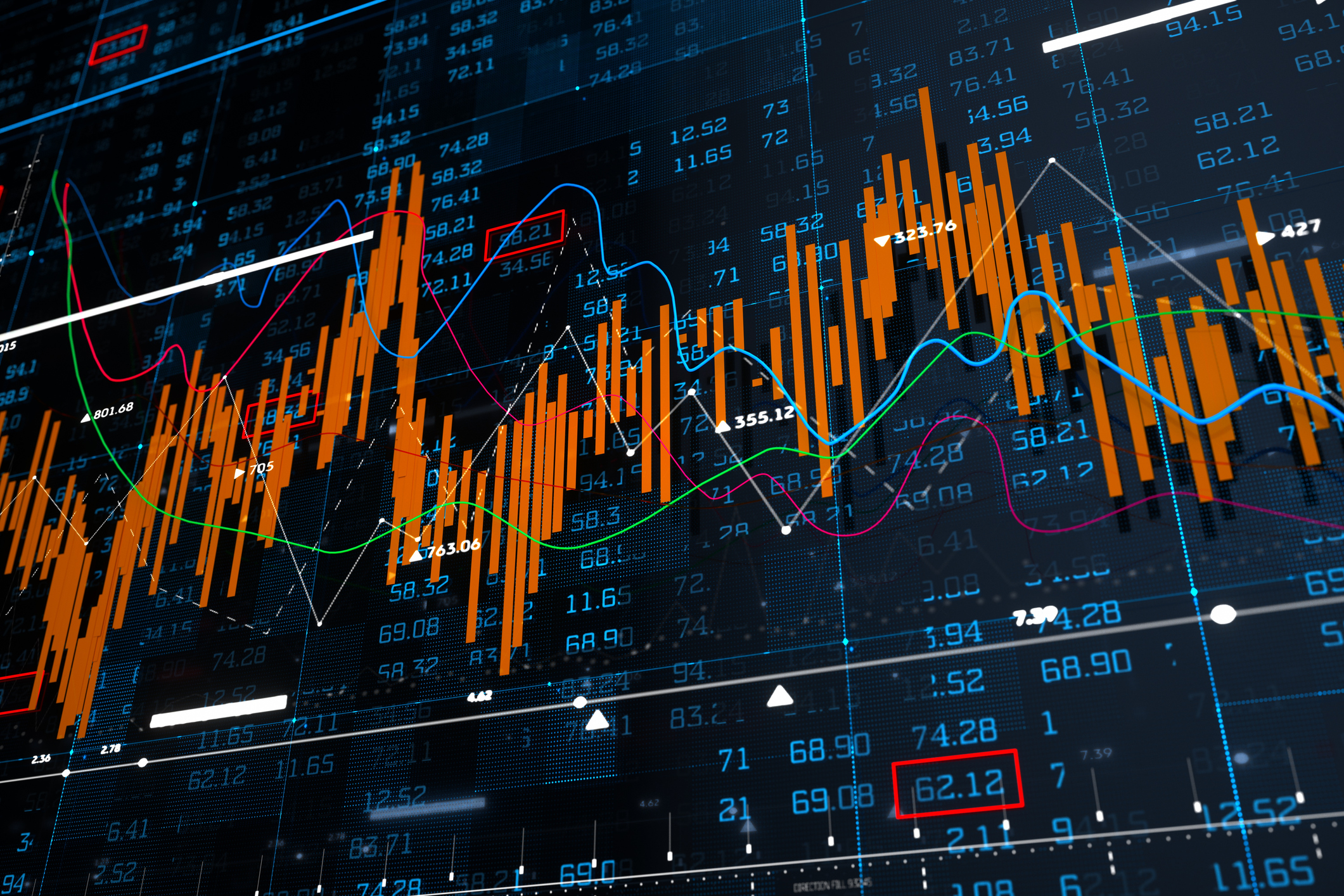 Stocks Extend Win Streak on Black Friday: Stock Market Today
Stocks Extend Win Streak on Black Friday: Stock Market TodayThe main indexes notched wins in Friday's shortened session, with the blue-chip Dow Jones Industrial Average closing higher on the month.
-
 Dow Adds 314 Points to Thanksgiving Rally: Stock Market Today
Dow Adds 314 Points to Thanksgiving Rally: Stock Market TodayInvestors, traders and speculators enjoy the best Thanksgiving Week gains for the major stock market indexes in more than a decade.
-
 Dow Gains 664 Points as Rate-Cut Hopes Rise: Stock Market Today
Dow Gains 664 Points as Rate-Cut Hopes Rise: Stock Market TodayMarkets are pricing in higher odds for a December rate cut, fueling a major rally in stocks ahead of the Thanksgiving holiday.
-
 Nasdaq Rises 2.7% as Musk Tweets TSLA Higher: Stock Market Today
Nasdaq Rises 2.7% as Musk Tweets TSLA Higher: Stock Market TodayMarkets follow through on Friday's reversal rally with even bigger moves on Monday.
-
 Dow Erases 717-Point Gain to End Lower: Stock Market Today
Dow Erases 717-Point Gain to End Lower: Stock Market TodayThe main indexes started the day with solid gains, but worries of an AI bubble weighed on stocks into the close.
